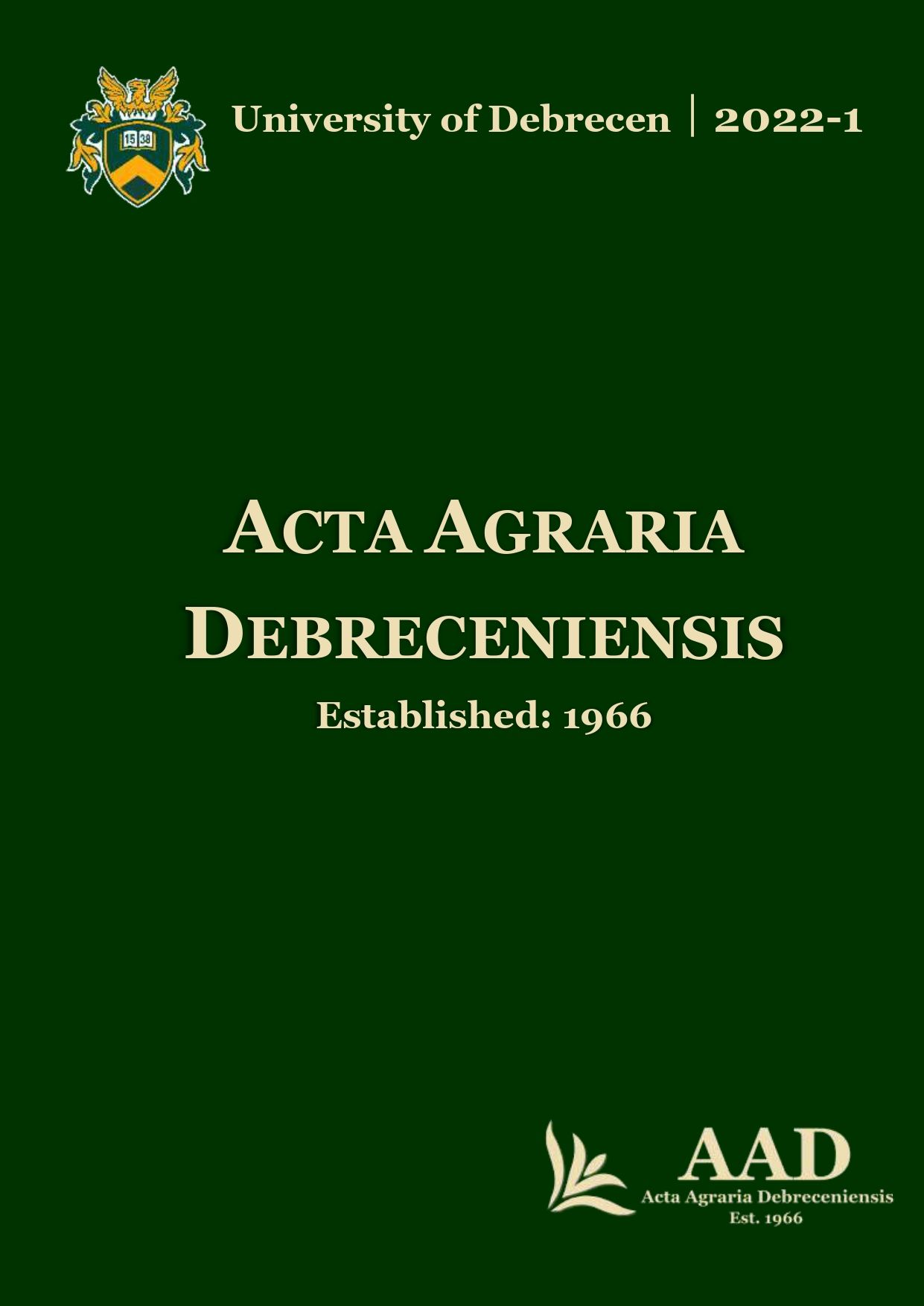Correlation analysis of relative chlorophyll content and yield of maize hybrids of different genotypes
Authors
View
Keywords
License
Copyright (c) 2022 by the Author(s)

This work is licensed under a Creative Commons Attribution 4.0 International License.
How To Cite
Accepted 2022-04-07
Published 2022-05-26
Abstract
In 2021, correlation between relative chlorophyll content and yield in three maize hybrids of different genotypes was examined. The data were collected at the Látókép Experimental Station of the University of Debrecen located on the Hajdúság loess ridge in Hungary. The soil of the small plot field strip plot trial, which was set up in 2011, was calcareous chernozem. Apart from the control treatment (without fertilisation), N fertiliser is applied in the form of base and top dressing. The base fertiliser containing 60 and 120 kg ha-1 N of nutrient applied in spring was followed by top dressing containing +30–30 kg ha-1 N in V6 and V12 phenophases. SPAD values measured at different phenological stages of the growing season increased by an average of about 28% up to 10 leaf stage for all three hybrids. In the pre-silking period (Vn), the relative chlorophyll content decreased by 8% on average. After an average increase of 14% in the tasselling and silking period, SPAD decreased by an average of about 29% at full maturity (R6).
For the different fertiliser treatments, higher N doses resulted in higher yields. In the basal fertiliser treatment, the A 60 N dose resulted in an average 34% increase in yield, and the A 120 N dose resulted in an average 94% increase in yield compared to the control. The 60 kg ha-1 N basal fertiliser (A60) increased in the V6 phenophase with an additional 30 kg ha-1 N resulted in an average yield increase of 26%. When 120 kg ha-1 N of basal fertiliser (A120) was increased by an additional 30 kg ha-1 N in the V6 phenophase, only the Merida hybrid showed a significant yield increase (7%). No further yield increase was observed when V690 and V6150 treatments were increased by an additional 30 kg ha-1 N in the V12 phenophase. The yield of the Armagnac hybrid decreased by almost 20%, the yield of Fornad by 3% and the yield of Merida by 1%.
References
- FAO (2021): https://www.fao.org/faostat/en/#data/QCL/visualize
- Horvath, É.–Fejér, P.–Széles, A. (2019): The impact of climatic factors on the relative chlorophyll content and yield of a maize hybrid in a long-term experiment. Acta Agraria Debreceniensis. 2019-1. 71–77.
- Horváth, É.–Tamás, A.–Fejér, P.–Széles, A. (2021): Effect of different N doses on maize yield and quality. Acta Agraria Debreceniensis. 2021-1. 97–101.
- KSH (2021): https://www.ksh.hu/stadat_files/mez/hu/mez0021.html
- Muschietti-Piana, M.P.–Cipriotti, P.A.–Urricariet, S.–Peralta, N.R.–Niborski, M. (2018): Using site-specific nitrogen management in rainfed corn to reduce the risk of nitrate leaching. Agricultural Water Management. 199: 61–70.
- Nagy, J. (2008): Maize production: Food, bioenergy, forage. Akadémiai kiadó. Budapest. 391 p.
- Nagy, J. (2018): Magyarország földhasználatának 150 éve (1868–2018). Növénytermelés. 67. 3: 51–72.
- Nagy, J. (2019): Komplex talajhasználati, víz- és tápanyag-gazdálkodási tartamkísérletek 1983-tól a Debreceni Egyetemen. Növénytermelés. 68. 3: 5–28.
- Nagy, J. (2021): Kukorica. Szaktudás Kiadó. Budapest, 516 p.
- Pethő, M. (2002): A mezőgazdasági növények élettana. Akadémiai Kiadó, Budapest. 507 p.
- Sárvári, M.–Boros, B.–Kovács, Gy. (2008): A kukoricatermesztés helyzete és jövője Magyarországon. Agronapló. 2008/4: 13–15.
- Sárvári, M.–Pepó, P. (2014): Effect Of production factors on maize yield and yield stability. Cereal Research Communications. 42. 4: 710–720.
- Széles, A.–Harsányi, E.–Kith, K.–Nagy, J. (2018): The effect of fertilisation and weather extremities caused by climate change on maize (Zea mays L.) yield in Hungary. Journal of Agriculture Food and Development. 4: 1–9.
- Széles, A.–Nagy, J.–Rátonyi, T.–Harsányi, E. (2019): Effect of differential fertilisation treatments on maize hybrid quality and performance under environmental stress condition in Hungary. Maydica. 64.2:1–14.
- Ványiné Széles, A.–Megyes, A.–Nagy, J. (2012): Irrigation and nitrogen effects on the leaf chlorophyll content and grain yield of maize in different crop years. Agricultural Water Management. 107: 133–144.
- Ványiné Széles, A.–Nagy, J. (2012): Effect of nutrition and water supply on the yield and grain protein content of maize hybrids. Australian Journal of Crop Science. 6.3: 381–390.

 https://doi.org/10.34101/actaagrar/1/10393
https://doi.org/10.34101/actaagrar/1/10393